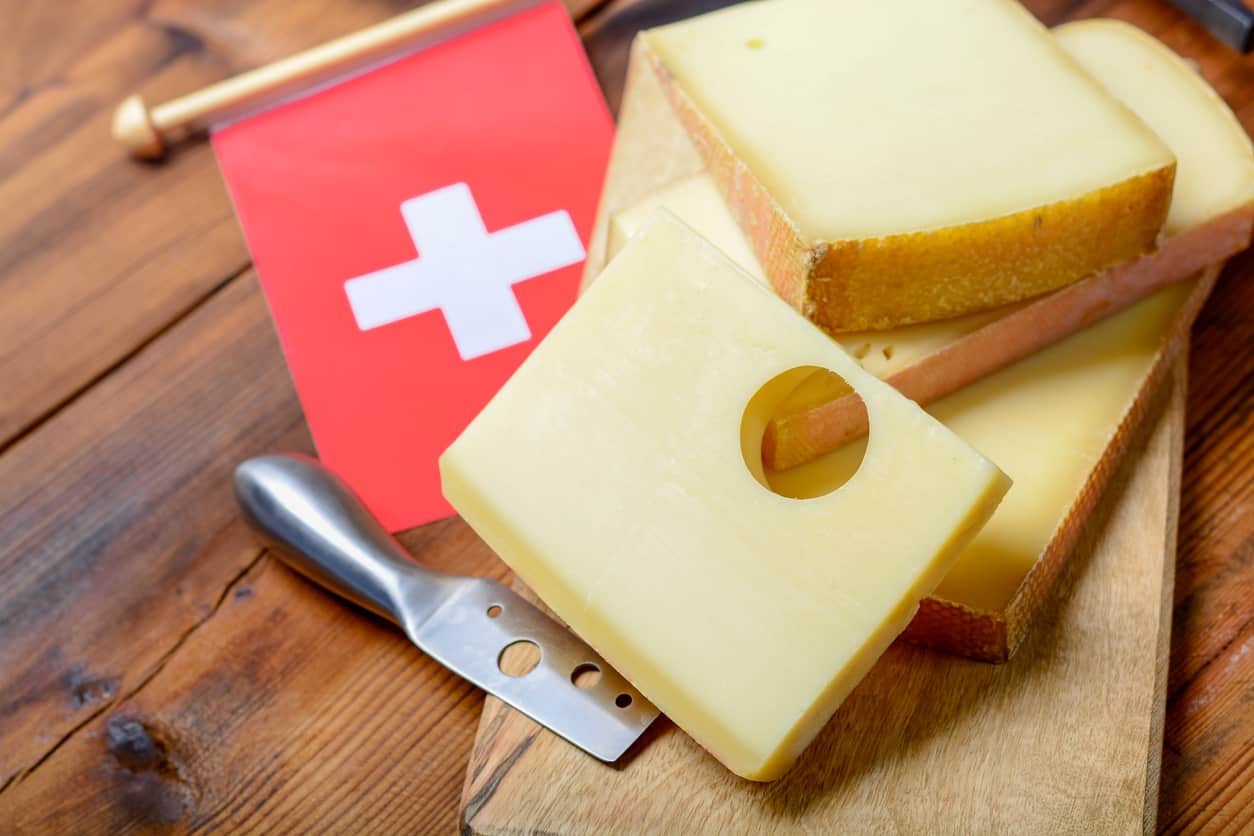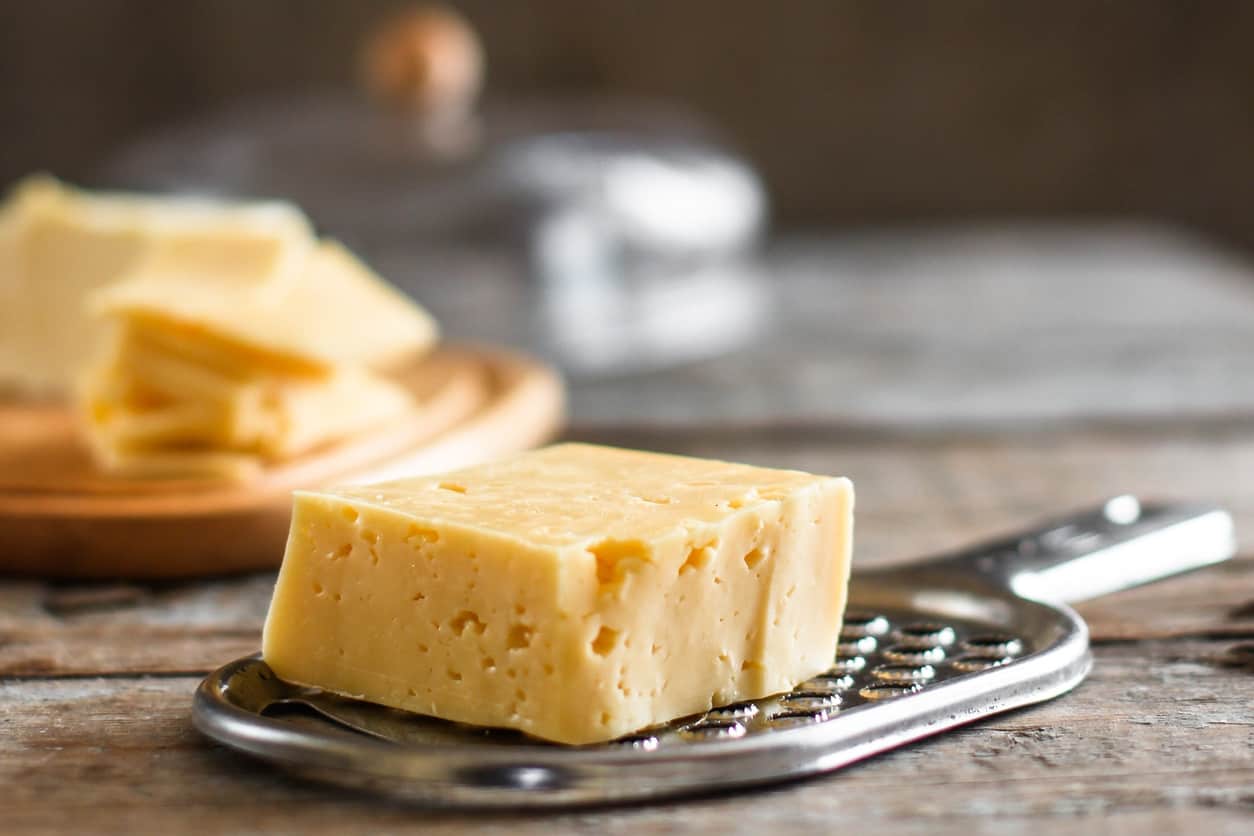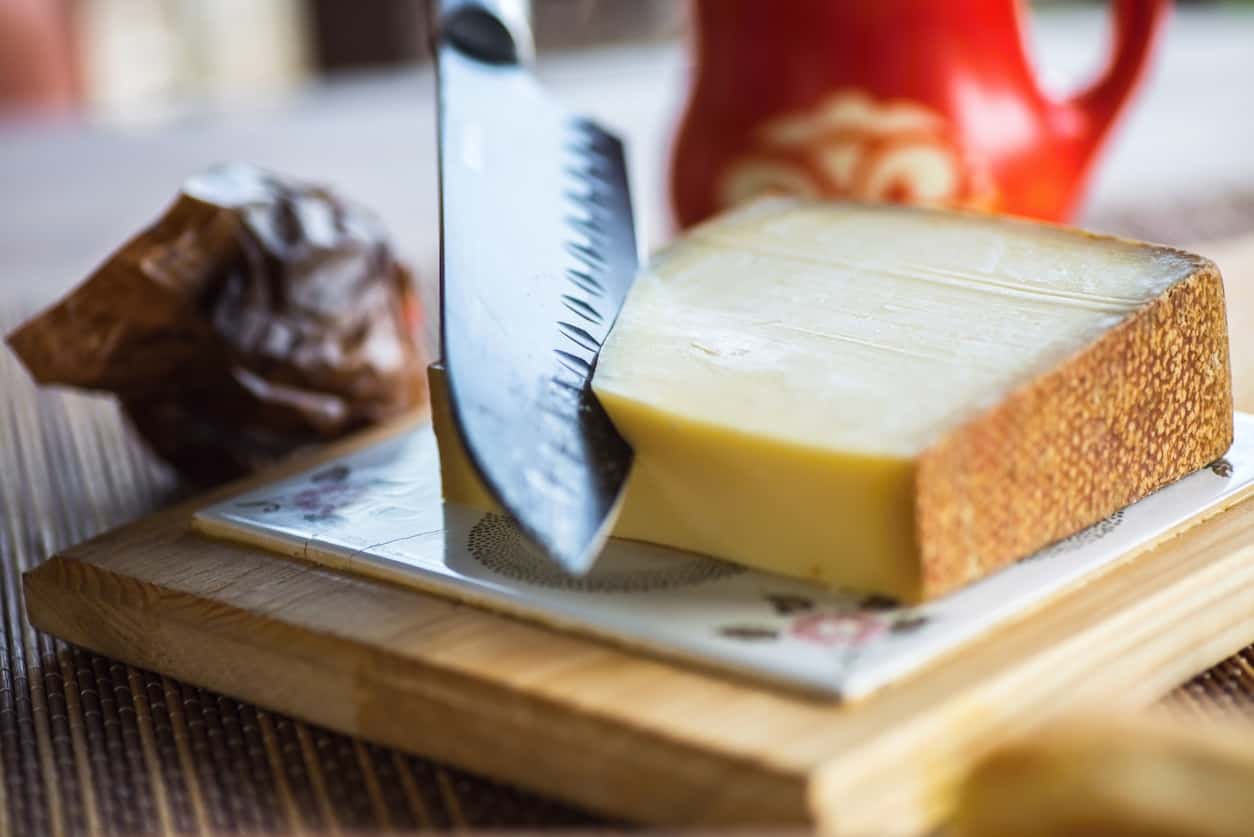Growing up, there was only big-block cheddar cheese, single-wrapped American cheese, and the one with all the holes, Swiss cheese. It wasn’t until I was an adult that I got to explore the world of cheeses.

Here we explore one of the most popular cheeses around the world, Gruyère cheese.
What is Gruyère cheese?
Gruyère cheese (pronounced groo-yehr) originated from a French-speaking region of Switzerland, in a small town called Gruyère. It’s a hard, aged cheese that is pale yellow with a few small holes. These characteristics make it so special.
We divide Swiss cheese into five categories – extra hard, hard, semi-hard, semi-soft, and soft. Hard cheeses, like Gruyère, are pressed to remove moisture, preserved and aged, and are more versatile than softer cheeses.
Characteristics of Gruyère Cheese
The variety and nutritional aspects of the grass in certain parts of Switzerland are part of what gives Gruyère its distinct flavor. Farmers in Fribourg, Switzerland follow strict guidelines (the Appellation d’origine controlee (AOC) status, when preparing their fields and caring for their livestock. Along with the different floral species in these areas and the amount of grass each cow consumes, these cows produce high-quality milk.
They heat the milk to 93 °F (34 °C), which curdles they add liquid rennet. This introduces flavorful bacteria and causes the milk to coagulate into curds. Then, the curds are cut into small pieces and allowed to cook until the temperature reaches 130 °F (54 °C) in a giant copper vat. The cooking vessel is important because copper ions leach into the milk and curds, which react and form the desired flavors.
Cheese makers place the curds into small moulds with salt or brine and allowed to ripen and age. The best signs of aged cheese, which changes the cheese’s flavor and complexity, are the tyrosine crystals along the edge as the cheese loses moisture.
What does Gruyère cheese taste like?
With taste, Gruyère cheese is versatile with flavors that change. The benefit to this is its delicious several ways – sliced on a sandwich, melted in French onion soup, as silky fondue, or as part of a cheeseboard.

The cheese starts as a young, creamy cheese with a nutty flavor. As it ages, the flavors become more complex, and the texture becomes more crumbly and firm. Even though Gruyère has a powerful aroma, most people do not consider it a “stinky cheese”.
Young Gruyère cheese, aged around six months, is popular for its sweet flavor and soft texture. At this stage, it’s perfect for melting since it has higher water content still.
AOP standards say that Gruyère must be aged for a minimum of five months. With age comes flavor, so older Gruyère cheeses develop a more intense and complex flavor. As cheese ages, it dries out. The firmness of the cheese makes it an excellent option for seasoning dishes, or served as is sliced and unprocessed. Older Gruyère will still melt, but not quite as readily as the less-aged version.
How much does Gruyère cheese cost?
As Gruyère cheese has become more popular, it’s more widely available in American supermarkets. It’s not typically sold whole in wheels, but in blocks or slices from the wheel. Price depends on the age, weight, brand, and origin.
Gruyère cheese that follows AOP guidelines is likely going to be more expensive, costing around $20 per pound. We think the flavor, richness, and texture is well worth the splurge.
Gruyère Cheese Nutrition

This hard cheese is a good source of protein and provides each of the nine essential amino acids. Each amino acid is involved in important processes, such as muscle and tissue growth, energy production, immune health, and nutrient absorption.
As with other cheeses, Gruyère helps you reach your calcium needs for the day. One ounce provides 29% of the recommended daily value.
Traditionally, this type of cheese is made from full fat. The fat contributes to the texture, flavor, and structure. Gruyère also provides vitamin A, phosphorus, and sodium.
What to Look for in Gruyère Cheese
- Flavor complexity: fruity, earthy, nutty, sweet, a little earthy
- Firm, dense, and creamy texture with bits of crystallization
- Aged for at least nine months
- High fat and low moisture
- Sodium range between 520 and 580 milligrams per 100 grams of cheese to enhance the flavor
- Larger pieces stay moist longer than smaller wedges
- Raw Gruyère uses unpasteurized milk, which is more readily available internationally
How to Use Gruyère Cheese
For Gruyère cheese, your options are endless. Yet, you may consider different brands and age depending on your recipe.
Gruyère should be wrapped tightly in plastic wrap and kept in the refrigerator. Well-wrapped, refrigerated Gruyère can last 3-5 weeks. If you don’t plan on using your block during that time frame, it’s also safe to freeze Gruyère for up to three months. Keep in mind that freezing removes some flavors and may change the texture.
Substitutes for Gruyère Cheese
Though unique in its flavor, you can find cheeses that closely resemble Gruyère. You can try Emmental, which is another type of Swiss cheese.
If you’re looking for a fondue replacement cheese, opt for a high-moisture cheese, like gouda or fontina. Cheddar will change the flavor of your dish completely but it has the similar melting power as Gruyère and works perfectly for some recipes like mac and cheese.
Enjoy Your Cheese
Even though this cheese is on the pricier side, it’s versatile and flavorful. It has characteristics that make it the perfect cheese to have wrapped up in your fridge.

Leave a Reply